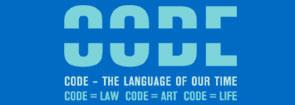| |
|
|
|
|
||
|
||||||||||||||||||||
| |
|
|
|
|
 |
|
 |
|||
| |
||||||||||
| |
||||||||||
 |
|
|||||||||
| |
||||||||||
| |
||||||||||
| |
||||||||||
| |
|
Tomoe Moriyama on the Interactive Art Jury
You are curator of the Tokyo Metropolitan Museum of Photography. What is your main working area? Tomoe Moriyama: The Tokyo Metropolitan Museum of Photography (TMMP) is the first example of the public museum in Japan which concerning about a broad field of image and visual technology. I have been working for that museum as a curator of visual media, art and technology field since 1989, from the very beginning. I am in charge of "Images & Technology Gallery" there, curating its exhibition of interactive art, animation, digital images, virtual reality, magic lanterns, shadow play, 3-D, etc. and I have organized many workshops and our permanent collection over 2000 pieces of items, like the movie "Film before film". At the same time, I am trying to do something new as a invited researcher and a lecturer of graduate school of The University of Tokyo and Waseda University in Tokyo, to introduce the result of their research as an exhibition or workshop, in a kind of comparison with art and science technology. You have published "The Dream Book". Can you explain what it is about? Tomoe Moriyama: In 1995, I started the permanent exhibition program of TMMP's grand opening as "Imagination" exhibition including a lot of visual devices and artists like Sommer & Mignonneau, Toshio Iwai and Yoichiro Kawaguchi, etc. The catalogue included whole documents of my past activity, like Sterarc's cyber performance, video art or installations since 1990. Again, in 2001, I organized one big retrospective exhibition featuring history of visual media and contemporary works of media art, entitled "Re-Imagination" and then published "The Dream Book", its catalogue. This book includes five historical themes – "Imagination", "Animation", "3-Dimension", "Magnified View" and "Documentation". At the same time, it includes a lot of media artists, animators, photographer and performer like Maywa Denki. In Japan, as the school programs of media art and technology at junior-high and high school started in 2002, there is a great need and population in this field although there is a few place to visit, few materials to learn or read. I think, it is our task to establishing one public museum or mediateque in Japan, in the near future. You have worked on Toshio Iwais work and it seems that "moving images" are fascinating for you, ar't they? Tomoe Moriyama: Yes, I was really influenced by them, including Toshio Iwai, and a lot of artists as my teachers, friends in University of Tsukuba. They are the pioneers of Japanese media art, not only moving images but also in other fields of image. Till the end of 80's, as there was no place to show their work, I have been trying to create a kind of ideal situation and surroundings for that field. I don't know if it is realized or not yet, but it is sure that the works like Iwai's are the key of imagination, introduction as a media, which can make a great wonder. In fact, the process of editing his book Open Studio – Iwai Toshio solo exhibition at ICC in 1997, writing an article "Toshio Iwai - An alcheology of media art" in 2001, was really exciting and happy memory for me. It is the first time that you are on the Prix Ars Electronica Jury. What are your expectations? Which are the criterias an interactive work must fulfil so that it could be worth a Golden Nica? Tomoe Moriyama: I am really looking forward to meet a lot of good communication and nice relationship in the art work which enable itself to be a superior interface. It might be true, as Ms.Jasia Reichardt said, when she curated her great exhibition "Cybernetic Serendipity", the interactive art is never be completed. But I believe that the work, which can be a media itself which enlarge our perception, not only demonstrating a kind of pre-set and limited contents which artists made. 5. Your favourite websites? Tomoe Moriyama: Tamas Waliczky (www.waliczky.net/: In 1993, Prof. Shaw introduced Tamas to me at the old building of ZKM, we collaborated many times in the past exhibitions and everytime his world is so calm and interesting. Ryota Kuwakubo (www.vector-scan.com/: Now the exhibition "Re-Imagination" is on tour around Japan and his work is very popular to the children elsewhere. Blog-DRAGON (www.blogjapan.com/dragon/: Blog (Web-log)Japan.com is one of the most interesting web site for me as a secret diary, to know Japanese art culture, with flash movie and some ascii art (Japanese smiley). |  |
|
||||||
| |
||||||||||
| |
||||||||||
| |
 |
|||||||||
| © Ars Electronica Linz GmbH, info@aec.at | ||||||||||